Najaf - A Historical and Religious Hub in Southern Iraq
It is located southwest of the capital, Baghdad, at a distance of 161 km from it. The city is 70 meters above sea level. Linguists and historians agreed that the meaning of Najaf is the high ground that resembles the dike that blocks the water from its surroundings or prevents the torrential water from reaching the houses of Kufa and its tombs. This height that represents the tip of a triangle whose base is Al-Kufa and Al-Hira was called Al-Zahr and its meaning is “high from the ground”. The name Najaf has been linked to the presence of a sea called (Ne) close to its location, and when it dried up they said (Ne-jaf) meaning that the sea “Ne” went dry.
There are four residential neighborhoods in the city: Al-Amara, Al-Huwaish, Al-Buraq and Al-Mishraq.
Najaf Governorate is one of the most important governorates that contain the holy shrines in Iraq, among them are:
Haidariya Shrine - A Sacred Monument of Najaf's Legacy
Historians report that Dawood bin Ali al-Abbasi was the first to discover Imam Ali’s tomb before 139 AH/750 AD. Additionally, Abbasid Caliph Harun al-Rashid, during his reign of flourishing Arab and Islamic civilization, was the first to confirm the location of the holy shrine around 170 AH/786 AD, during a hunting trip in Najaf. He stopped at Ad-dhakawat Al-Bid, a site with three heights and a valley where Imam Ali’s grave lay, and ordered a red clay dome to be built over it in honor of Imam Ali’s significance. Over time, the shrine gained attention from caliphs, princes, and governors, and became a symbol of pride, adorned with 7,777 gold bricks and two golden minarets, each 35 meters tall and containing 40,000 gold bricks.
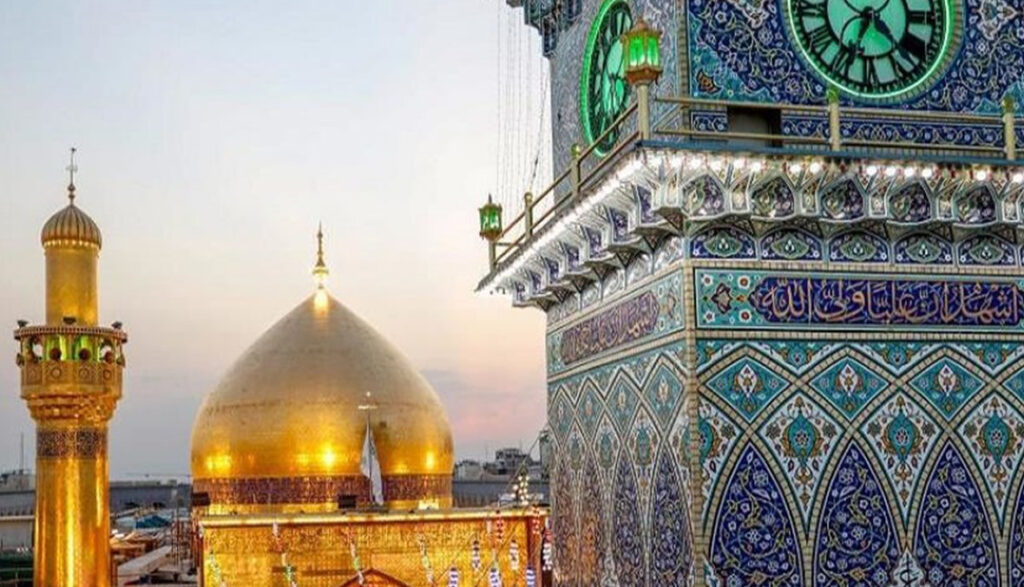
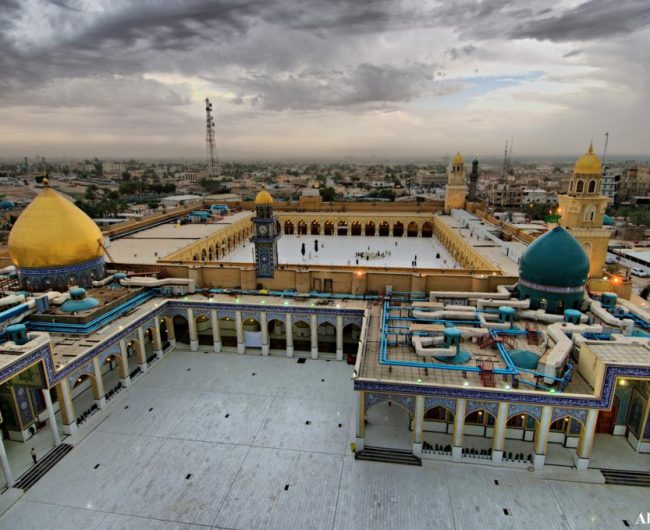
Kufa Mosque - A Historic Landmark of Islamic Heritage and Devotion
Kufa is one of the most significant cities in the Islamic world, established by Muslims during the early Islamic conquests. Founded by the Arab leader Saad bin Abi Waqqas in 17 AH / 638 AD under Caliph Omar Ibn Al-Khattab, Kufa means “assembly” in Arabic, referring to a gathering of soldiers, with its sand mixed with gravel.
The city’s historical importance is emphasized by its role as the capital of the Islamic state under Imam Ali in 36 AH / 657 AD. The Jameh Mosque in Kufa, the second oldest mosque in Iraq after the Basra Mosque, was built in the early Islamic period. It now stands over the original city mosque, which was nearly square and supported by 28 semi-circular towers. The mosque houses several shrines, including those of Imam Ali, who was martyred while praying, and the shrines of Muslim bin Aqeel and Hani bin Urwa. The mosque has been extensively restored, including the maintenance of its shrines and rebuilding of its old wall.
Dar Al-Imara - A Historic Seat of Power in Kufa's Legacy
Dar Al-Imara in Kufa was built from the remains of a Persian royal palace on the outskirts of Al-Hira. It is considered one of Kufa’s most important landmarks, with some foundations and walls still intact, though much of it is buried under sand. When Saad bin Abi Waqqas founded Kufa in 17 AH / 638 AD, he designated the area near the mosque for his palace, which later became known as Dar Al-Imama or Qasr Al-Imama. This palace witnessed major historical events during the Rashidi and later periods.
It served as the residence of Kufa’s governors, but Imam Ali, while Caliph, chose not to use it as his headquarters, instead using the Jameh Mosque. Excavations revealed that Dar Al-Imara was surrounded by a 170-meter long, 4-meter thick external wall, supported by semi-circular towers—six on each side except for the northern side, which had two. This design provided strong protection against external attacks.
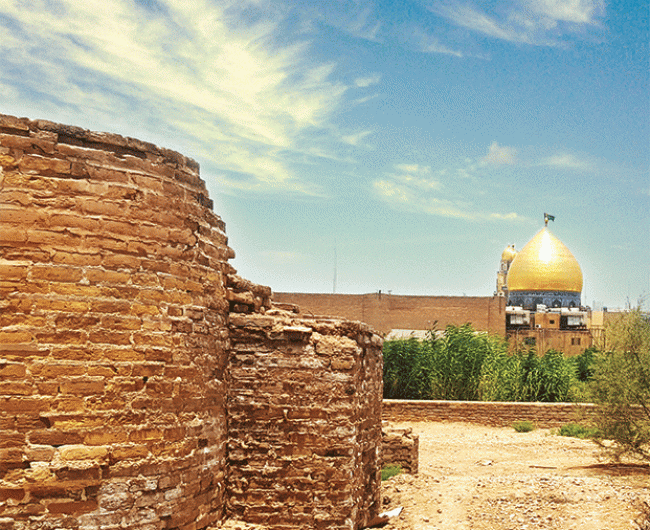
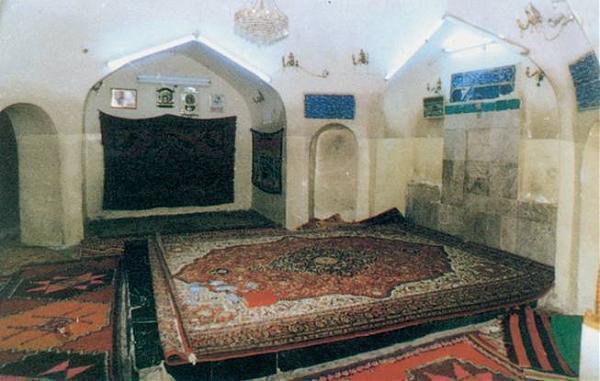
Dar Al-Imam Ali bin Abi Talib - Site of Imam Ali's Final Moments
When Imam Ali went to Kufa in the year 36 AH, he did not want to take Dar Al-Imara as a residence for himself or his family. Rather, he stayed in his sister Umm Hani’s house, which is a very simple modest house close to Dar Al-Imara and the Kufa Mosque, where it is 100 meters away from the southwestern corner of the Kufa Mosque. In the middle of his sister’s house is found a well of water that is still sweet to the present day, and was not affected by salinity, despite the surrounding groundwater that led to the collapse of part of Qasr Al-Imara. In one of the rooms of this house, Imam Ali bin Abi Talib moved a wounded man from the Kufa Mosque after he was beaten by Abdul Rahman bin Muljam Al-Muradi, and it is in this room where Imam Ali took his last breath before he died, and where he was washed after his martyrdom.
Darb Zubaydah - The Historic Iraqi Hajj Path and Engineering Marvel
During the Abbasid era, a path was established connecting Baghdad to the Holy Land. In 134 AH/751 AD, during the reign of Abu al-Abbas, the needs of desert travelers were addressed by digging wells, building ponds and water tanks, and constructing khans for rest. The road was also secured from attacks by tribes and bandits.
This route, which ran from Kufa through water-scarce areas, became an engineering achievement, providing water for pilgrims via a network of wells and tanks. Stretching 1,300 km, the road was paved and supplied with water by Zubaydah, the wife of Caliph Harun al-Rashid, to assist pilgrims traveling from Iraq to Mecca. As a result, the road was named “Darb Zubaydah,” marking one of the greatest contributions to Islamic history.
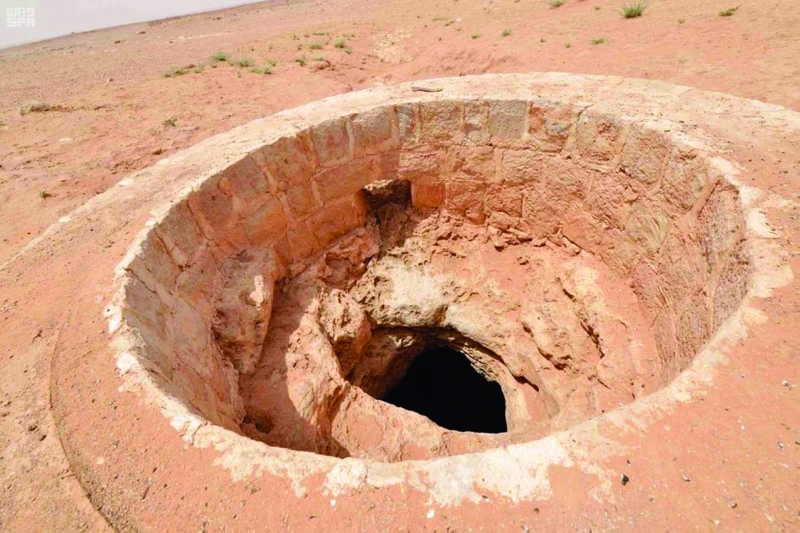
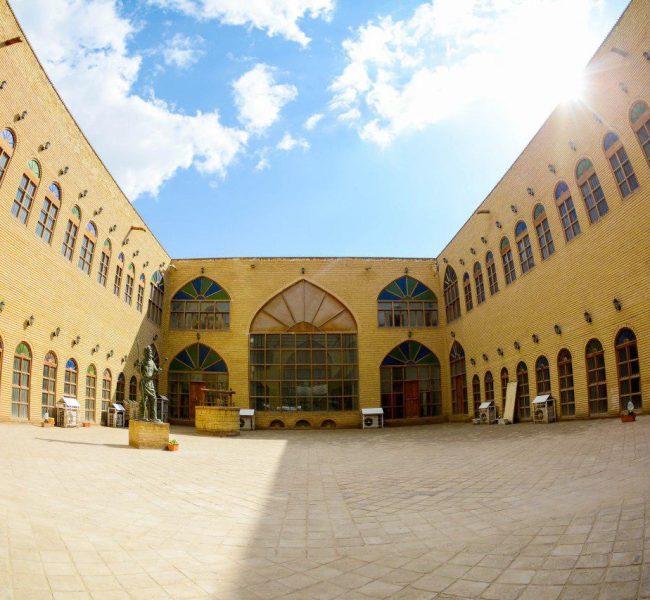
Khan Al-Shaylan - A Historic Symbol of Najaf's Political and Cultural Legacy
The street is located in the historic city of Najaf and was built in 1895 AD with the primary purpose of accommodating the increasing number of visitors coming to pay their respects to Imam Ali. Over the years, the street has witnessed significant historical changes. Initially, it became the seat of the Ottoman local government, reflecting the political influence of the Ottomans in the region at the time. Following this period, the street later served as the headquarters for the British government during their occupation of Iraq.
During the twentieth revolution, the street was converted into a prison for English prisoners, and many of them left behind writings and memories on its walls, which still remain visible today. These inscriptions stand as a testimony to the turbulent times and struggles that shaped the region. In more recent years, the Khan has been repurposed into a museum. Today, it stands as a cultural and historical landmark, offering visitors a deeper understanding of the rich history, heritage, and traditions of Najaf and Iraq. It continues to serve as a vital reminder of the city’s significant role in the broader history of the region.
Wadi Al-Salam Cemetery - A Sacred Site of Religious and Historical Significance
This cemetery is regarded as one of the largest and most significant cemeteries in the world, both in terms of its size and the historical and religious importance it holds. It is home to the revered shrines of the prophets Hood and Saleh, peace be upon them, who are two of the great figures in Islamic tradition. In addition to these notable figures, the cemetery also contains the graves of a large number of righteous saints, esteemed scholars, and devout believers who have contributed to the spiritual and intellectual heritage of the Islamic world.
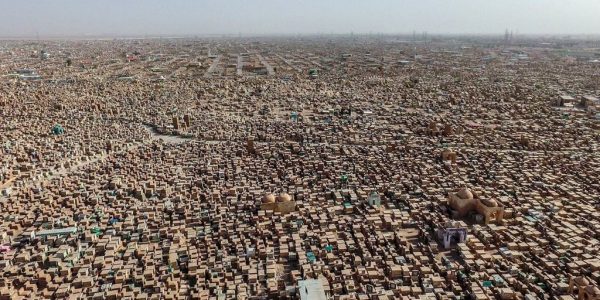
Frequently Asked Questions A Comprehensive Travel Guide to Najaf
The best time to visit Najaf is during the cooler months, from October to April, when the temperatures are more comfortable for traveling. The holy month of Ramadan and religious events like Ashura also attract many visitors.
Najaf is approximately 160 km south of Baghdad. You can travel by road, with buses and taxis available for hire. The journey usually takes around 2 to 3 hours, depending on traffic.
Yes, if you’re traveling from outside Iraq, you will need a visa to enter the country. Many travelers apply for a tourist or pilgrimage visa, which can be arranged through authorized travel agencies like World Gate.
Najaf is home to the holy shrine of Imam Ali, one of the most significant pilgrimage sites for Muslims. Other attractions include the Kufa Mosque, the Wadi-us-Salaam cemetery, and the historical sites around the city, which can be explored with guidance from World Gate.
While Najaf is generally considered safe for pilgrims, it’s important to stay updated on travel advisories. World Gate can provide you with the most current information regarding safety and travel conditions.
To arrange your pilgrimage to Najaf, you can contact World Gate, which offers personalized pilgrimage packages that include travel arrangements, accommodations, and guided tours to sacred sites in Najaf.
Najaf offers a variety of accommodations, from luxury hotels to more budget-friendly options. Many of these are located close to the Imam Ali shrine. World Gate can help you find the best accommodation based on your preferences and budget.
Visitors to the holy sites in Najaf are expected to dress modestly. Women should cover their heads with a hijab, and men should avoid wearing shorts or sleeveless shirts. If you’re unsure about the dress code, World Gate can provide guidance.
When visiting Najaf, it’s important to show respect for local customs and religious practices. Pilgrims typically engage in prayers, recitations, and other rituals at sacred sites. World Gate can provide you with detailed information on the proper conduct during your visit.
Yes, World Gate can arrange for local transportation within Najaf, including taxi services, buses, and private cars, to ensure that you can easily visit various landmarks and holy sites during your stay.
